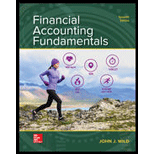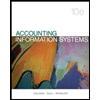
Book Value of Share:
It shows the current book value of each share. It comes after subtracting
Price Earnings ratio:
It shows how much a shareholder pays for every $1 of its dividend. It is determined by dividing Price of share by dividend.
Earnings per share:
It shows how much a shareholder earns on his one share. It is determined by dividing net income from outstanding shares.
1.
Book value of per share of the common stock.
Explanation of Solution
Solution:
Formula for calculating book value per share is:
For A. Company:
Given info,
Total common stockholder’s equity is $119,255,000.
Total number of outstanding shares is $5,578,753.
Substituting, $119,255,000 for total common stockholder’s equity and $5,578,753 for total number of outstanding shares in the above formula,
Hence, the book value of share is $21.39.
For G. Company:
Given info,
Total common stockholder’s equity is $120,331,000.
Total number of outstanding shares is $687.348.
Substituting, $120,331,000 for total common stockholder’s equity and $687.348 for total number of outstanding shares in the above formula,
Hence, the book value of share is $175.07.
2.
Earning per share of the common stock.
2.
Explanation of Solution
Solution:
Formula for earnings per share is:
For A. Company:
Given info,
Net income is $119,355,000.
Total number of outstanding shares is 5,578,753.
Substituting, $119,355,000 for net income and 5,578,753 for total number of outstanding shares in the above formula,
Hence , the earning per share is $21.39.
For G. Company:
Given info,
Net income is $16,348,000.
Total number of outstanding shares is 648.626.
Substituting, $16,348,000 for net income and 648.626 for total number of outstanding shares in the above formula,
Hence , the earning per share is $23.88.
3.
To compute: Dividend yield and explain they are income or growth stock.
3.
Explanation of Solution
Solution:
Formula for calculating dividend yield is:
For A. Company:
Given info,
Dividend per share is $1.98.
Value of each share is $107.25.
Substituting, $1.98 for dividend per share and $107.25 for value of each share in the above formula,
Hence , the dividend yield is 1.85%.
For G. Company:
Given info,
Dividend per share is $0.
Value of each share is $775.10.
Substituting, $0 for dividend per share and $775.10 for value of each share in the above formula,
Hence , the dividend yield is 0%.
They both are growth stock as A. Company gives low return and G. Company give no return at all. It means they are reinvesting the money.
Hence, both are growth stock.
4.
To compute: Price earnings ratio and identify which one is undervalued.
4.
Explanation of Solution
It shows the amount paid by the investor for every $1 of dividend.
Formula for calculating price earnings ratio:
5.
To compute: Price earnings ratio and explain them.
5.
Explanation of Solution
It shows the amount paid by the investor for every $1 of dividend.
Formula for calculating price earnings ratio:
For A. Company:
Given info,
Earnings per share are $9.28.
Market value per share is $107.
Substitute, $9.28 for earnings per share and $107 for market value per share in the above formula,
Hence, price earnings ratio is 11.53
For G. Company:
Given info,
Earnings per share are $23.88.
Market value per share is $775.10.
Substitute, $23.88 for earnings per share and $775.10 for market value per share in the above formula,
Hence, price earnings ratio is 32.46
It show that that amount paid by the investor of A. Company for every $1 of dividend is $11.53 and amount paid by the investor of G. Company for the payment of $1 dividend is $32.46. It means investor of G. Company is triple the amount of money for same dividend.
Hence, Investor of G. Company is paying triple the amount of money for same dividend as compare to the A. Company.
Want to see more full solutions like this?
Chapter 11 Solutions
FINANCIAL ACCT.FUND.(LOOSELEAF)
- I need assistance with this general accounting question using appropriate principles.arrow_forwardGillan company had beginning inventory of 100 units at $12 each. During the period, they purchased 200 units at $14 each and 300 units at $15 each. If they sold 400 units, calculate the ending inventory value using FIFO, LIFO, and weighted average methods.arrow_forwardProvide correct solution and accounting questionarrow_forward
- I am searching for the correct answer to this general accounting problem with proper accounting rules.arrow_forwardI am searching for the correct answer to this financial accounting problem with proper accounting rules.arrow_forwardA proposed project has estimated sale units of 3,200, give or take 3 percent. The expected variable cost per unit is $9.45 and the expected fixed costs are $21,800. Cost estimates are considered accurate within a plus or minus 4 percent range. The depreciation expense is $3,750. The sale price is estimated at $14.20 a unit, give or take 2 percent. The company bases its sensitivity analysis on the expected case scenario. If a sensitivity analysis is conducted using a variable cost estimate of $9.80, what will be the total annual variable costs?arrow_forward
- How does operational efficiency measurement differ from financial metrics? (a) Process effectiveness indicators complement cost measures (b) Financial data tells complete story (c) Efficiency remains constant (d) Standard metrics work everywhere. MCQarrow_forwardFor the month ended February 29, 2024, Carlisle Solutions reported revenues of $48,500, expenses of $51,800, and dividends of $3,900. Carlisle Solutions experienced a net income or net loss of what amount?arrow_forwardGeneral accounting questionarrow_forward
- Principles of Accounting Volume 1AccountingISBN:9781947172685Author:OpenStaxPublisher:OpenStax College
 Pkg Acc Infor Systems MS VISIO CDFinanceISBN:9781133935940Author:Ulric J. GelinasPublisher:CENGAGE L
Pkg Acc Infor Systems MS VISIO CDFinanceISBN:9781133935940Author:Ulric J. GelinasPublisher:CENGAGE L Managerial AccountingAccountingISBN:9781337912020Author:Carl Warren, Ph.d. Cma William B. TaylerPublisher:South-Western College Pub
Managerial AccountingAccountingISBN:9781337912020Author:Carl Warren, Ph.d. Cma William B. TaylerPublisher:South-Western College Pub - Century 21 Accounting Multicolumn JournalAccountingISBN:9781337679503Author:GilbertsonPublisher:Cengage





